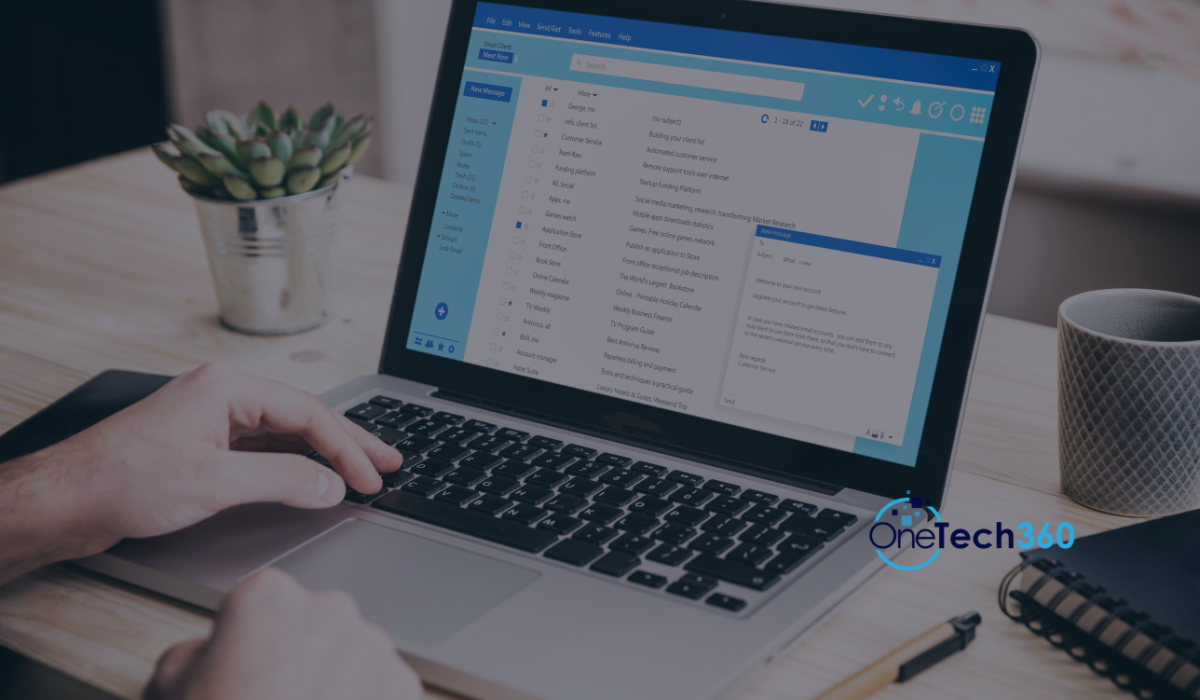Email is one of the most commonly used tools for business communication—and also one of the most targeted by cybercriminals. With 94% of companies experiencing email-related security incidents (source: Egress), it’s no surprise that attackers see your inbox as a prime entry point.
But here’s the good news: Adopting the right security measures can dramatically reduce your risk and protect your company and your employees.
In this post, we’ll walk you through 10 actionable email security best practices that every business—big or small—should implement today.
Why Email Security Matters
Cyberattacks via email aren’t just annoying—they can be devastating. A single phishing email can open the door to stolen credentials, ransomware infections, or major data leaks.
Here’s what effective email security helps prevent:
- Data breaches that expose sensitive client or employee data
- Financial losses from fraudulent wire transfers or scams
- Reputation damage that can take years to rebuild
- Compliance violations under laws like GDPR, HIPAA, or PCI-DSS
Despite these risks, many companies only address email security after experiencing a breach. Let’s flip the script by being proactive, not reactive.
Common Email Threats to Watch For
Before we jump into the top 10 email security Solutions, let’s take a quick look at the threats you’re up against:
- Phishing Attacks: Deceptive emails designed to trick recipients into revealing login credentials or clicking malicious links.
- Ransomware & Malware: Malicious software delivered through attachments or links that can encrypt files or steal data.
- Spoofing & Impersonation: Fake emails that appear to come from trusted sources, often used in business email compromise (BEC) scams.
- Data Leakage: Unintentional sharing of sensitive information due to misdirected emails or lack of encryption.
- Spam & Unwanted Messages: These are not just annoying—they can carry hidden threats.
Now that you know the risks, let’s get into the good stuff: protecting your email like a pro.
|
More articles you might like: |
Top 10 Email Security Best Practices
1. Use a Secure Email Gateway (SEG)
A Secure Email Gateway filters incoming and outgoing messages to block threats like:
- Phishing attempts
- Malware and viruses
- Spam and suspicious links
Platforms like Mimecast, Proofpoint, and Barracuda are popular options that integrate easily with Microsoft 365 or Google Workspace.
Tip: Look for a solution that offers real-time threat intelligence and automatic quarantine of suspicious emails.
2. Create Strong, Unique Passwords
Weak or reused passwords are one of the most common causes of email breaches.
Best practices:
- Use at least 12 characters
- Combine uppercase, lowercase, numbers, and symbols
- Avoid personal details (birthdays, names, etc.)
- Never reuse the same password across accounts
A password manager like Bitwarden, 1Password, or Dashlane can help you generate and store secure passwords easily.
3. Enable Two-Factor Authentication (2FA)
Adding 2FA to your email login process is one of the simplest and most effective ways to block unauthorized access.
Common 2FA methods include:
- Text message codes
- Authenticator apps (e.g., Google Authenticator, Authy)
- Hardware security keys (e.g., YubiKey)
- Biometric verification
Bonus: 2FA can stop over 99% of automated attacks.
4. Educate Your Team with Email Security Training
Even with great tools, your people need to know how to spot threats.
Topics to cover in training:
- Recognizing phishing emails
- What to do with suspicious links or attachments
- Reporting suspicious emails to IT
- Safe data sharing practices
Run regular training sessions and simulated phishing exercises using platforms like KnowBe4 or Cofense.
Fact: 90% of successful cyberattacks start with human error (source: IBM).
5. Encrypt Sensitive Emails
Encryption keeps your email content private—scrambling it so only the intended recipient can read it.
Types of encryption:
- TLS (Transport Layer Security): Encrypts emails in transit
- End-to-End Encryption: Ensures only sender and receiver can read the content
Use built-in encryption features in Gmail or Outlook, or consider secure email services like ProtonMail or Tutanota.
Reminder: Email encryption is required in regulated industries like finance, healthcare, and legal services.
6. Keep Software and Antivirus Programs Updated
Cybercriminals love outdated software—it’s full of holes they can exploit.
Stay protected by:
- Enabling auto-updates on all devices
- Keeping antivirus and email clients up to date
- Removing unused plugins or browser extensions
Regular updates ensure you’re protected against newly discovered threats.
7. Avoid Public Wi-Fi for Email Access
Public Wi-Fi is convenient—but risky. It’s often unencrypted and easily monitored by attackers.
When you need to check your email on the go:
- Use a VPN to encrypt your connection
- Stick to your mobile data if possible
- Avoid sending sensitive information over open networks
Stat: 40% of users have experienced data exposure on public Wi-Fi (source: Norton).
8. Back Up Important Emails and Data
Even with top-tier protection, things can still go wrong. Regular backups are your safety net.
Tips for secure backups:
- Use encrypted cloud storage with automatic syncing
- Test backup systems regularly to ensure reliability
- Restrict access to sensitive data archives
Tools like SpinBackup, Carbonite, or Backblaze can handle backups automatically.
9. Keep Work and Personal Email Separate
Mixing personal and business emails increases the risk of accidental data leakage or exposure to phishing.
Why it matters:
- Keeps sensitive work data more secure
- Reduces spam and marketing clutter in business inboxes
- Helps enforce company email usage policies
Encourage employees to avoid signing up for non-work services with their business email address.
10. Monitor Email Activity for Suspicious Behavior
Monitoring helps detect threats before they become breaches.
Look for tools that track:
- Unusual login patterns
- Multiple failed login attempts
- Suspicious forwarding rules
- Malicious attachments or URLs
Platforms like Microsoft Defender, Google Workspace Security, or Onetech360 offer real-time monitoring and alerts.
Advanced Tip: Use SIEM (Security Information and Event Management) software for centralized threat detection.
Advanced Security Tips
Want to go beyond the basics? Here are some bonus techniques:
- Set expiration dates for sensitive emails
- Enable DMARC, SPF, and DKIM for domain authentication
- Limit file types allowed in attachments
- Use role-based access controls for sensitive email content
Final Thoughts: Be Proactive, Not Reactive
This Top 10 Email Security is about more than just deleting spam or avoiding sketchy links. It’s about building a defense system that protects your communication, data, and business integrity.
By implementing these 10 best practices, you’ll:
- Strengthen your organization’s security posture
- Stay compliant with data protection laws
- Reduce your vulnerability to attacks
- Build trust with clients and partners

